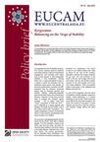Central Asia and the Global Economic Crisis
Central Asia and the Global Economic Crisis
Author(s): Richard Pomfret
Subject(s): Supranational / Global Economy, Governance, Economic policy, International relations/trade, Economic development
Published by: CEPS Centre for European Policy Studies
Keywords: Central Asia; global economic crisis; European Union; EU Strategy; economic development; international trade;
Summary/Abstract: In 2007 the EU published a Strategy for a New Partnership with Central Asia. In its initial stages the EU focused on developing new forums for dialogue with the Central Asian countries, and received some criticism for inadequate substantive actions. This Policy Brief argues that the current global economic crisis does not alter the priorities of the EU Strategy, but it does require the EU to stick to existing obligations and also provides an opportunity for fresh initiatives to better achieve the Strategy’s fundamental goals. A striking feature of the five Central Asian countries’ economic strategies is that they followed divergent paths after becoming independent in 1991. Despite strong similarities in culture, history and economic structure, their transitions from Soviet central planning ranged from the most rapidly liberalising (the Kyrgyz Republic) to the most non-reforming (Turkmenistan) of all former Soviet republics.
Series: EUCAM - Policy Brief
- Page Count: 6
- Publication Year: 2009
- Language: English
- Content File-PDF

